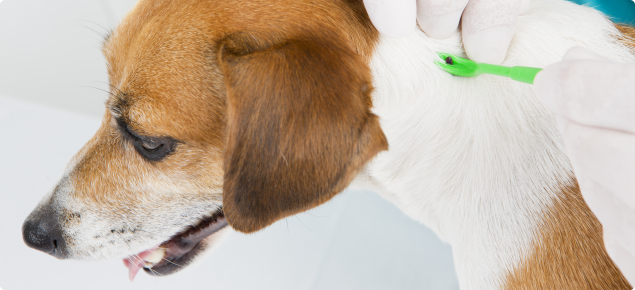Where does anaplasmosis occur?
Anaplasmosis occurs in many parts of the world including the United States of America and Europe.
A. platys is endemic in dogs in northern Australia.
Signs of anaplasmosis
Infection in a dog will lead to a decrease in platelets, which are important for blood clotting. This may happen in a cyclical manner, every few weeks, and is known as infectious cyclic thrombocytopaenia.
Infection with A. platys in dogs may not cause signs of disease (asymptomatic) or may result in a mild illness that includes one of more of the following:
- lethargy
- weakness
- pale gums (anaemia)
- bruising on skin surface/gums (poor blood clotting)
- loss of appetite, weight loss
- fever.
Signs may be more severe in young dogs or where there is co-infection with another tick-borne disease such as babesia.
Note: Anaplasmosis has similar disease signs to ehrlichiosis (Ehrlichia canis) infection in dogs. Erhlichiosis is a notifiable disease in Australia and must be reported to a Department of Primary Industries and Regional Development (DPIRD) vet. See the ehrlichiosis webpage for more information.
Diagnosis and treatment
Anaplasmosis in dogs is diagnosed with a blood test and a blood smear. Contact your local vet or DPIRD vet to discuss testing if you think your animal may be affected.
Treatment of anaplasmosis with a course of antibiotics is usually successful.
Prevention
Regular tick control (e.g. collars, spot-on treatments, oral chews) is recommended for prevention of ticks, however these methods work best when combined with frequent tick checks (especially around the neck, head, ears, armpits and belly). Your vet can advise on the best method to remove ticks.
Note: Anaplasmosis in cattle
Anaplasmosis or ‘tick fever’ in cattle is caused by a different species of anaplasma to that in dogs, A. marginale, and is transmitted by the cattle tick (Rhipicephalus microplus). Anaplasmosis in cattle is reportable in cattle tick-free areas (below the tick line) of Western Australia.
More information
Contact your local vet or DPIRD vet for more information about anaplasmosis.

